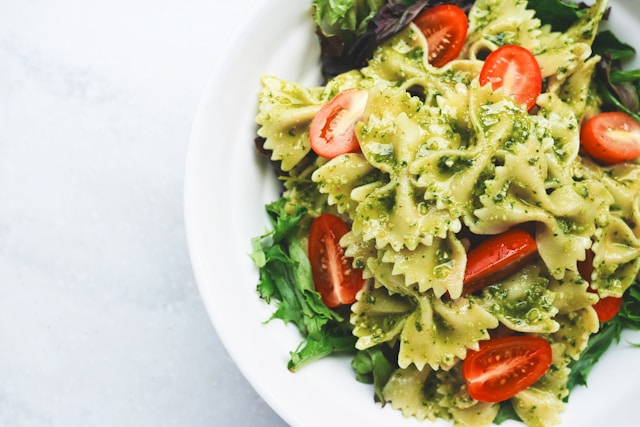
System Overview
Platform Architecture
Chicago’s gastronomic food navigation system is built on a flexible architecture that integrates several key components: mapping, restaurant data management, and integration with mobile devices. The wayfinding software supports cloud-based solutions, allowing for real-time updates of establishment information and rapid scalability to support new restaurants and users. The solution uses APIs to interact with other services, such as transportation and payment systems, as well as food delivery platforms.
Navigation Features
Navigation in the system is accomplished through integration with mapping services such as Google Maps or OpenStreetMap. Users receive accurate routes that take into account up-to-date information on traffic and road conditions. Built-in algorithms optimize the route taking into account not only distance but also waiting time, saving time on the way to the restaurant. Voice guidance is also supported for user convenience while driving.
User Interface Design
The platform’s interface focuses on simplicity and intuitiveness. Adaptive design is used for mobile devices, which automatically adjusts to the screen size and operating system. Visual elements are minimalistic so as not to overwhelm the user with information, and all key functions are accessible with a few clicks. The use of bright and clear icons helps the user to quickly navigate through the application.
Local Integration
Chicago Food Districts
Chicago is divided into several gastronomic districts, each with its own peculiarities and popular establishments. The system takes these specifics into account and provides users with neighborhood-specific itineraries. For example, in the West Loop neighborhood, you can find many restaurants offering haute cuisine, while in Lincoln Park, there is a concentration of establishments for family vacations. Filters are built into the system, allowing users to select a restaurant based on its location and neighborhood atmosphere.
Restaurant Partnerships
To improve the accuracy of information, the system actively partners with local restaurants to provide menu, pricing, and service details. Partner restaurants have access to tools to update information in real time, which helps avoid errors caused by changes in operating hours or food availability. Restaurants can also participate in promotions and offers that are automatically displayed in the app for users.
Cultural Food Mapping
Chicago is a culturally vibrant city, and the navigation system takes full advantage of this feature. To enhance search and presentation, users can access cultural maps that show the locations of restaurants specializing in the cuisines of various nations, from Italian and Mexican to Vietnamese and Ethiopian. This feature not only helps users find establishments but also discover new gastronomic destinations that align with their interests.

Navigation Features
Real-time Directions
A key feature of the system is providing users with real-time routes. The system continuously monitors road conditions and public transportation schedules to suggest the fastest routes. This is particularly useful for users relying on public transit or bicycles, as the application accounts for schedule updates and potential delays.
Public Transit Integration
The system integrates with Chicago’s public transit networks, offering routes that combine different modes of transportation, such as buses, subways, and streetcars. For instance, if a user is downtown and wants to reach a restaurant in South Chicago, the system will recommend the most efficient route using multiple subway and bus lines. This integration minimizes wait times and enhances travel convenience.
Parking Solutions
Chicago’s parking challenges are addressed through integration with local parking services. The app displays available parking spots near the selected restaurant, along with details on parking fees and reservation durations. This feature simplifies the process of securing parking, especially in high-demand areas of the city where parking availability is limited.
Food Discovery Tools
Cuisine Categories
To enhance user convenience, the system categorizes restaurants by cuisine types such as American, Japanese, Indian, Chinese, and others. This feature simplifies finding establishments that align with the user’s preferences, whether they are seeking a specific cuisine or dish. Built-in filters also enable searches tailored to dietary preferences, such as vegetarian or gluten-free options.
Price Point Filters
The platform includes filters to help users search for restaurants within their desired price range. For instance, users can select establishments offering affordable meals or those with higher price points for special occasions. This feature is particularly helpful for individuals planning events or seeking budget-friendly dining options.
Special Dietary Options
The system pays special attention to users with dietary restrictions. It allows searches for restaurants that provide vegan, vegetarian, gluten-free, and other specialized menus. Built-in filters enable users to refine their search based on specific dietary needs, making it easier for individuals with allergies or strict diets to find suitable dining options.
User Experience
Mobile Accessibility
The platform is fully optimized for mobile devices, enabling users to search for restaurants, plan routes, and order food conveniently from their homes. Mobile apps for iOS and Android provide account synchronization, storing user preferences and order history. A notable feature is the app’s offline functionality, which ensures usability across the city, even in areas with poor network connectivity.
Search Functionality
The platform’s search functionality leverages intelligent algorithms that consider not only location but also previous search queries. For instance, if a user frequently searches for Italian cuisine, the system will recommend new Italian restaurants nearby. Additionally, the search can be refined with multiple parameters simultaneously, significantly improving its accuracy and relevance.
Personalization Features
To enhance user satisfaction, the platform offers personalization options, allowing users to save their favorite restaurants, cuisine preferences, and price categories. For example, if a user consistently orders vegan food, the system will prioritize suggestions from establishments that match their dietary needs.
Business Integration
Restaurant Dashboard
The platform provides restaurants with a user-friendly dashboard to track orders, update menu and pricing information, and analyze dish popularity. Restaurants can also manage promotions and discounts and engage with customers through a built-in review and rating system.
Analytics Tools
Restaurants gain access to analytics tools that allow them to monitor customer traffic, identify the most popular dishes, and understand audience preferences. This data enables restaurants to optimize their operations, tailor their offerings, and enhance service quality.
Marketing Features
The platform includes marketing tools such as targeted promotions, discounts, and bonus programs to attract new customers and retain loyal ones. Restaurants can create special offers that appear in search results for specific target audiences.

Technical Infrastructure
Data Management
The system leverages cloud-based solutions to store and process restaurant, user, and order data. All information is secured with encryption, and regular backups are performed to prevent data loss. The system also supports a high degree of scalability, enabling seamless adaptation to the growing number of users and restaurants.
Map Integration
Integration with map services such as Google Maps and Mapbox allows users to navigate the city accurately and locate nearby restaurants. Real-time map updates ensure precise restaurant locations and reliable directions.
API Connectivity
The system supports APIs for integration with external services, including online ordering systems, delivery platforms, and payment gateways. This functionality enables restaurants to expand their operations by connecting the platform to their own order and offer management systems.
Local Compliance
Food Safety Ratings
The platform incorporates food safety ratings provided by local regulatory agencies. Users can view these ratings, enabling them to make informed choices and select establishments that meet safety standards.
License Verification
The system automatically verifies restaurant licenses and ensures compliance with local regulations. This feature helps users avoid establishments operating without the necessary permits.
Health Department Integration
Integration with the Chicago Health Department provides users with up-to-date information on the health status of restaurants. This data is displayed in the app and can influence their choice of establishment.
Future Developments
AI Implementation
The system plans to integrate artificial intelligence to enhance personalization and predict user preferences. For example, AI could recommend restaurants by analyzing previous orders and user preferences.
Augmented Reality Features
Augmented reality technologies will enable the display of restaurant information in real time. Users will be able to view a restaurant’s appearance through their smartphone’s camera, making the selection process more convenient.
Community Integration
The platform will expand its social integration features, allowing users to share reviews, recommendations, and even organize joint dinners or events. This will add value to the platform and increase its popularity among users.




